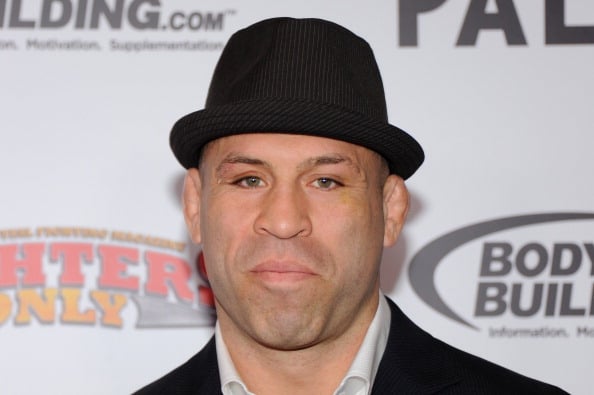Wanderlei Silva at a Glance
Wanderlei Silva’s Net Worth: A Look at the MMA Legend’s Career and Earnings
Introduction: The Axe Murderer’s Legacy
Wanderlei Silva, a name synonymous with aggression, power, and excitement in the world of mixed martial arts, has carved a legacy that continues to resonate with fight fans worldwide. This article delves into the net worth of Wanderlei Silva, examining his career earnings, fight history, and the factors that contributed to his financial success. From his early days in Brazil to his dominant run in PRIDE and his stints in the UFC, we’ll explore the journey of a true MMA icon.
Early Life and Training: The Genesis of a Fighter
Born Wanderlei César da Silva on July 3, 1976, in Curitiba, Brazil, Silva’s path to MMA stardom began at a young age. At 13, he started training at the renowned Chute Boxe Academy, a gym known for its emphasis on Muay Thai and a fierce, aggressive fighting style. This early immersion in combat sports laid the foundation for his future success. Silva’s formative years were shaped by the rough-and-tumble environment of street fighting, which he incorporated into his fighting style. His trainers, Rudimar Fedrigo, Cristiano Marcello, and Rafael Cordeiro, honed his skills, transforming raw talent into a formidable fighting machine. Before his professional career, Silva briefly served in the Brazilian army, further solidifying his discipline and work ethic.
IVC and the Rise of a Star: Silva’s Early Career
Before making waves in the larger promotions, Silva cut his teeth in the International Vale Tudo Championship (IVC). He competed in four IVC events (IVC 2, 6, 9, and 10), showcasing his raw power and aggressive style. Silva won five of his six matches, his only loss due to a cut stoppage. These early fights provided invaluable experience, preparing him for the challenges that lay ahead and helping him to build a reputation as a force to be reckoned with.
UFC: The Initial Stint
Wanderlei Silva made his debut in the Ultimate Fighting Championship on October 16, 1998, at “UFC Brazil: Ultimate Brazil.” Unfortunately, his initial run in the UFC was short-lived. He suffered a swift defeat to Vitor Belfort, lasting only 44 seconds. Though he secured a knockout win against Tony Petarra in his next match, Silva’s journey in the UFC was met with another setback when he lost to Tito Ortiz in the UFC Light Heavyweight Championship. This initial period in the UFC was not as successful as later stages in his career, but it was an essential learning experience.
PRIDE Fighting Championships: Dominance in Japan
Silva’s career truly took off when he joined the Japanese promotion, PRIDE Fighting Championships. His PRIDE debut on September 12, 1999, at “PRIDE 7” was a statement, as he dominated Carl Malenko. He quickly established himself as a dominant force in the middleweight division, winning eighteen straight fights (excluding a draw against Mirko Cro Cop). Silva’s aggressive, exciting style endeared him to fans and made him one of the most popular fighters in PRIDE. This included a notable victory over Quinton “Rampage” Jackson at “Pride Final Conflict 2003” where he utilized a barrage of knees to secure a TKO victory and retain his PRIDE middleweight title. Silva’s reign of dominance saw him become the PRIDE 2003 Grand Prix Middleweight Champion and PRIDE Middleweight Champion.
The end of Silva’s winning streak came at the hands of Mark Hunt at “PRIDE Shockwave 2004”, where he lost by a controversial split decision. Despite the loss, Silva remained a top contender and earned the Fighter of the Year awards from Sherdog and the Wrestling Observer Newsletter in 2004. In 2006, he lost his middleweight title to Dan Henderson. After suffering a medical suspension, Silva’s final PRIDE appearance came in the same year.

Ethan Miller/Getty Images
Return to UFC and Later Career
Wanderlei Silva returned to the UFC in 2007, reigniting his career. Unfortunately, injuries and surgeries in late 2010 and early 2011 forced him to take time off. After a few setbacks, Silva showed resilience by winning a match against Cung Le at “UFC 139” replacing an injured Vitor Belfort. His comeback was a testament to his determination and fighting spirit, although his later UFC performances were mixed. Silva’s career continued, but his peak years were undoubtedly during his PRIDE era. He demonstrated his adaptability by keeping up with MMA through a multitude of changes to the sport.
Personal Life and Legacy
In 2007, Wanderlei Silva moved to the United States and opened a training center in Las Vegas, Nevada, called The Wand Fight Team Training and Conditioning Center. In 2016, he became an American citizen, but ultimately, he moved back to his hometown of Curitiba, Brazil. Wanderlei Silva has a son, Thor, with his wife, and a daughter from a previous relationship. Silva’s fighting style, marked by relentless aggression and a willingness to engage in a brawl, has left an enduring impact on MMA. He is remembered for his exciting fights, knockout power, and fierce determination. His impact is felt today, with many fighters citing him as an inspiration.
/**/
Conclusion: The Enduring Impact of Wanderlei Silva
Wanderlei Silva’s net worth of $18 million reflects the success he achieved in the world of MMA. His aggressive fighting style, combined with his incredible performances in PRIDE and the UFC, made him one of the most beloved and exciting fighters of his era. From his early training days in Brazil to his international fame, Wanderlei Silva’s career is a testament to dedication, skill, and the enduring appeal of mixed martial arts. His legacy continues to inspire new generations of fighters and fans, solidifying his place as one of the true legends of the sport.

